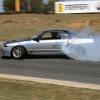Twin Scroll Vs Single
Announcements
-
Similar Content
-
Latest Posts
-
Yeah don’t have time to go to the omori factory unfortunately now. 🤣
-
9200 would be fair but doubt they cost that now hahah … surprised no one is just copying them.
-
That's essentially the clutch that I have behind my Neo. Big box of course, but it won't matter that you have a small box, as you won't have it for too long.






Recommended Posts
Create an account or sign in to comment
You need to be a member in order to leave a comment
Create an account
Sign up for a new account in our community. It's easy!
Register a new accountSign in
Already have an account? Sign in here.
Sign In Now